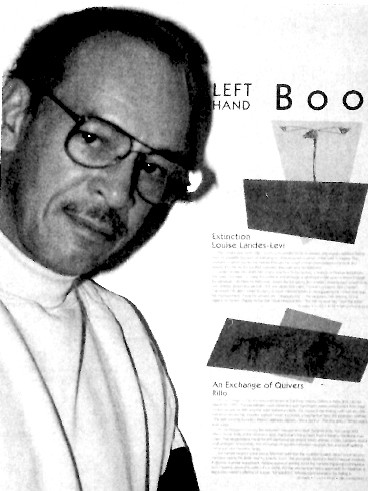
Bill Keith: EPC page

EPC Digital Library has four free PDFs of Bill Keith’s books, as part of his EPC author page: here.
William “Bill” Keith (January 20, 1929–September 1, 2004) was an American artist, born in New Rochelle, who began his artistic life as a painter, but moved into photography and visual poetry. His visual poetry ran a full gamut from calligrams inspired by Apollinaire and other early twentieth-century French poets to Lettrisme to the Minimalism and Op Art of the 1960s. As his work developed, he concentrated increasingly on African and African American themes and sources. The development toward African roots and branches lead away from the Roman alphabet and more toward the store of iconography and symbolism from Egypt to South Africa to the American diaspora. As he progressed, he developed graphic techniques suggested by textiles, wood carvings, bronze casts, ceramics, and other indigenous arts. He built up rhythmic patterns through repetitions of graphic elements from sources as diverse as road signs and zebra stripes.
“Pictographs mixes different types of picture-writing with fragments of prose in a formal arrangement linked to West African visual traditions. Keith’s constructions employ designs intended to be scanned metrically, a visual counterpart to the off-beat phrasing of melodic accents in African and Afro-American music. Keith’s ‘writing’ seems suspended between two others: painting and music. The staggered siting of glyphs and signs marks the subtle crossover from picture language to picture theory. Text runs in strips against a black background, so so much as arguments to follow as seams joining master and slave narratives. In Keith’s discourse on his situation as a poet in a late capitalist society, a picture emerges of an artist who in mastering his art becomes a slave to it.” [— from the back cover copy of the book].
Adinkra Poems uses West African symbols named after a nineteenth-century Ivory Coast King. The symbols were copied from the Ashanti royal stool.
“Keith moved through the early active Black Panthers period, then embraced the Afrocentric movement (when he traveled through Africa and visited Timbuktu) to become later in his life a staunch ‘pure aesthetics artist,’” his publisher Igor Satanovsky told EPC. “He insisted that art should be purely for art’s sake.”
Keith’s work as a whole becomes a celebration of the adventures of African sources as they moved and interacted with the rest of the world. Individual works may initially seem merely decorative, but familiarity reveals a call to the kinetics and dynamics of celebration.
Read more on the Keith EPC page.